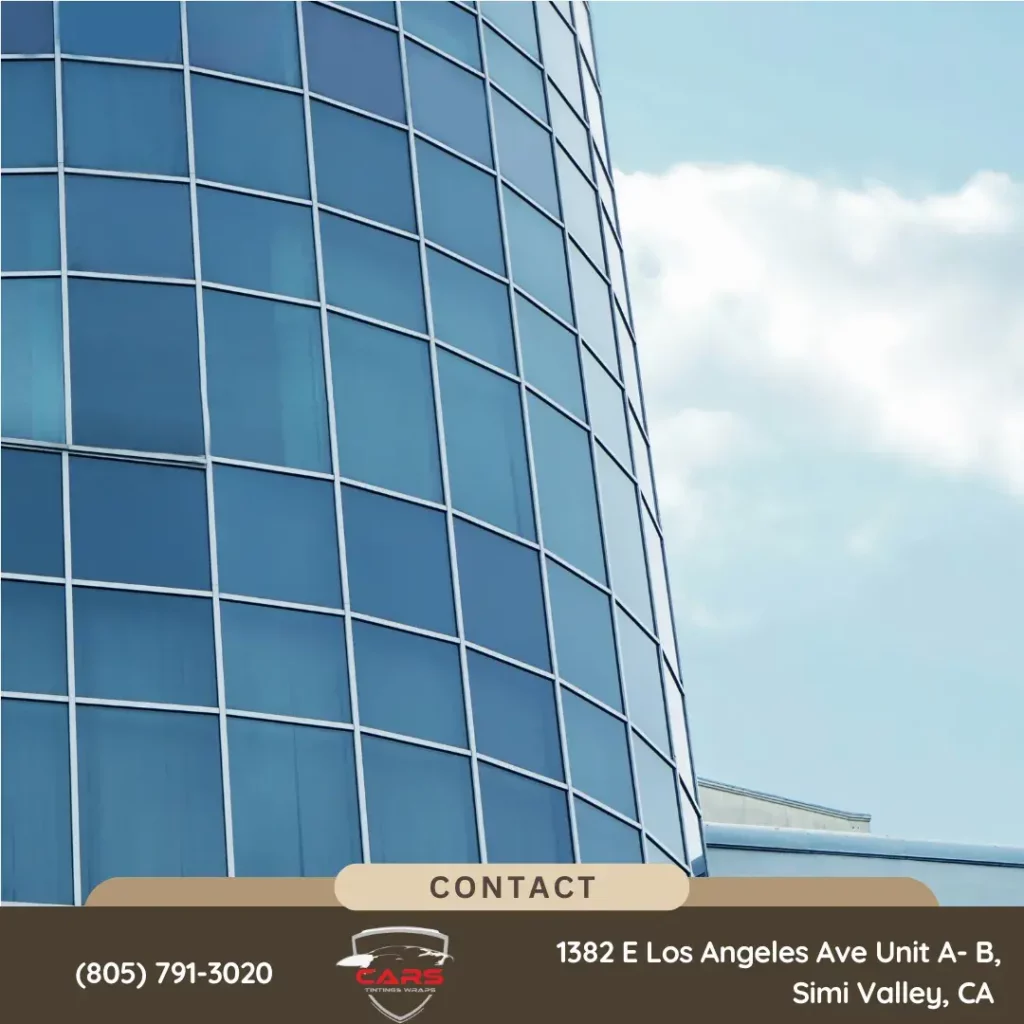
Commercial tinting improves energy efficiency by applying specialized films to windows that regulate solar radiation. These films, made of polyester, metalized coatings, and adhesives, reflect infrared radiation and greatly decrease heat gain. This process can block up to 79% of solar energy and 99% of harmful UV rays, thereby reducing cooling costs and energy usage. Moreover, reducing glare enhances employee comfort and productivity while safeguarding office equipment. The careful preparation guarantees excellent film adhesion, further enhancing energy-saving advantages. Explore more about how this technology can positively influence operational costs and the work environment.
How Commercial Tinting Works
Commercial tinting operates through the application of specialized films to windows, which effectively enhances energy efficiency by controlling the amount of solar radiation that enters a building. These films are composed of multiple layers of polyester, metalized coatings, and adhesives that are engineered to reflect, absorb, and transmit varying degrees of solar energy. The metalized coatings, often made of materials such as aluminum or silver, play a vital role in reflecting infrared radiation, thereby reducing heat gain within the building.
The installation process requires meticulous surface preparation to guarantee maximum adhesion and longevity of the film. Technicians begin by cleaning the window surface to remove any contaminants that could hinder the adhesive properties of the film. Once the surface is prepared, the film is carefully applied using a squeegee to eliminate air pockets and secure a seamless bond with the glass.
Performance metrics such as Visible Light Transmission (VLT), Solar Heat Gain Coefficient (SHGC), and U-value are essential in evaluating the effectiveness of commercial tinting films. These parameters help in selecting the appropriate film based on specific energy efficiency goals and building requirements. Understanding these technical specifications is crucial for optimizing the building’s thermal performance and achieving desired energy savings.
Benefits of Commercial Tinting
Given the intricate mechanisms and technical specifications behind commercial tinting, its advantages for energy efficiency become apparent. Commercial window tinting utilizes advanced materials and cutting-edge technology to significantly reduce solar heat gain, thereby lowering cooling costs. Through selective transmission, reflection, and absorption of light, these tint films optimize indoor climate control.
Key Benefits:
- Heat Rejection: High-performance window films can reject up to 79% of solar energy, drastically reducing the heat load on HVAC systems. This translates into lower energy consumption and operational costs.
- UV Protection: Commercial tinting can block up to 99% of harmful ultraviolet rays, mitigating the risk of interior fading and degradation of furnishings, thereby extending the lifespan of office equipment and decor.
- Glare Reduction: By controlling the amount of daylight penetrating the workspace, tinting minimizes glare on screens and work surfaces, enhancing employee comfort and productivity.
The integration of these sophisticated tint films not only augments energy efficiency but also contributes to the overall sustainability goals of the organization. By adopting commercial tinting, businesses can achieve substantial cost savings while fostering an environmentally responsible image, resonating with both stakeholders and customers who value sustainable practices.
To sum up, commercial tinting serves as a highly effective method for enhancing energy efficiency by reducing cooling costs. By utilizing advanced materials and technology, tinting minimizes solar heat gain and glare, thereby maintaining interior temperatures. The benefits extend beyond cost savings to include improved occupant comfort and increased property value. Ultimately, commercial tinting is a practical solution that “kills two birds with one stone,” addressing both financial and environmental concerns in the quest for sustainable building management.